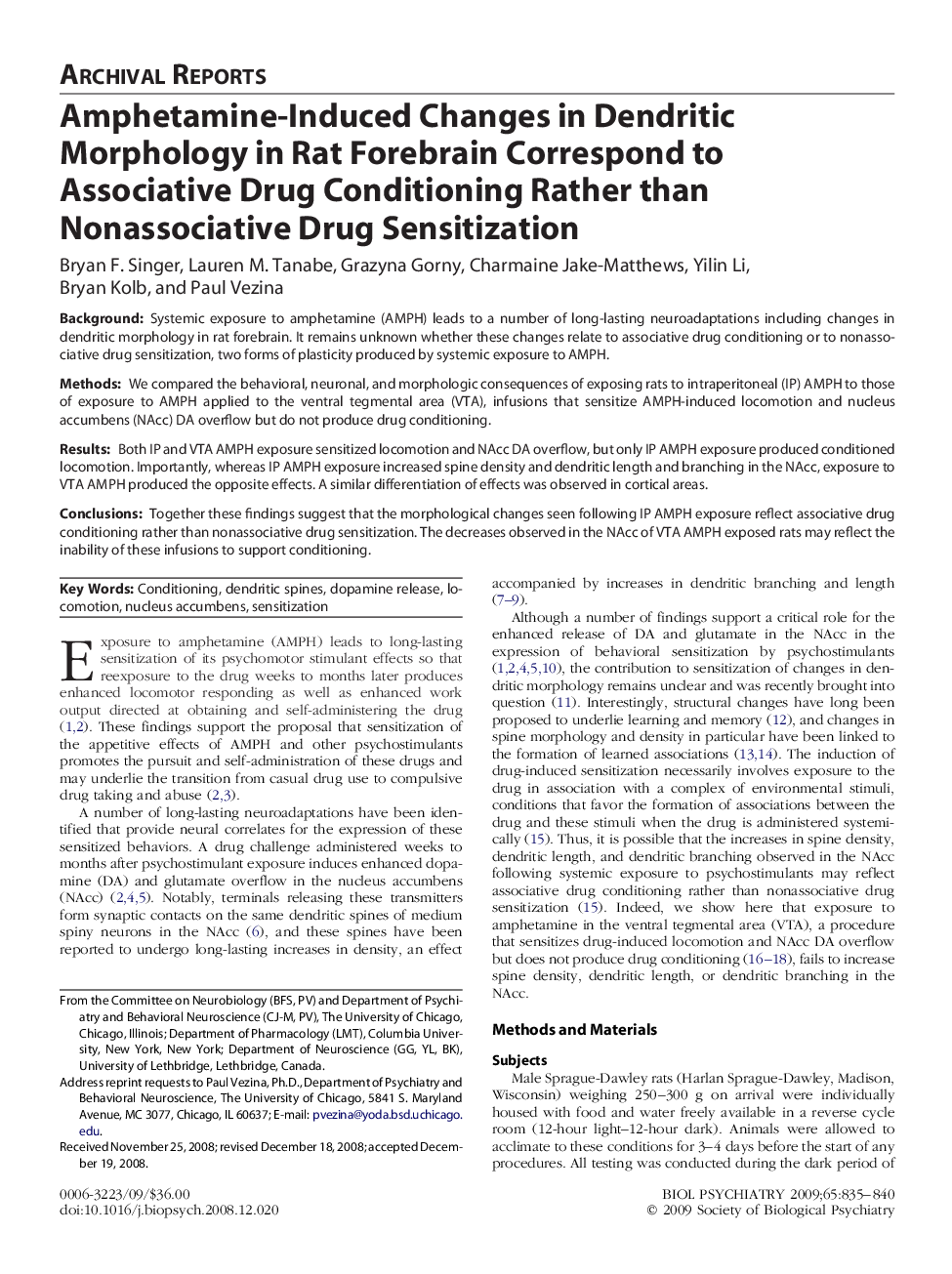| Article ID | Journal | Published Year | Pages | File Type |
|---|---|---|---|---|
| 4179229 | Biological Psychiatry | 2009 | 6 Pages |
BackgroundSystemic exposure to amphetamine (AMPH) leads to a number of long-lasting neuroadaptations including changes in dendritic morphology in rat forebrain. It remains unknown whether these changes relate to associative drug conditioning or to nonassociative drug sensitization, two forms of plasticity produced by systemic exposure to AMPH.MethodsWe compared the behavioral, neuronal, and morphologic consequences of exposing rats to intraperitoneal (IP) AMPH to those of exposure to AMPH applied to the ventral tegmental area (VTA), infusions that sensitize AMPH-induced locomotion and nucleus accumbens (NAcc) DA overflow but do not produce drug conditioning.ResultsBoth IP and VTA AMPH exposure sensitized locomotion and NAcc DA overflow, but only IP AMPH exposure produced conditioned locomotion. Importantly, whereas IP AMPH exposure increased spine density and dendritic length and branching in the NAcc, exposure to VTA AMPH produced the opposite effects. A similar differentiation of effects was observed in cortical areas.ConclusionsTogether these findings suggest that the morphological changes seen following IP AMPH exposure reflect associative drug conditioning rather than nonassociative drug sensitization. The decreases observed in the NAcc of VTA AMPH exposed rats may reflect the inability of these infusions to support conditioning.
